For any container gardener, the choice of pot is often just as important as the flora within.
If said container is made of a material that’s not a good fit for the current situation, the plant inside – and the grower that cares for it – can both face some real struggles.
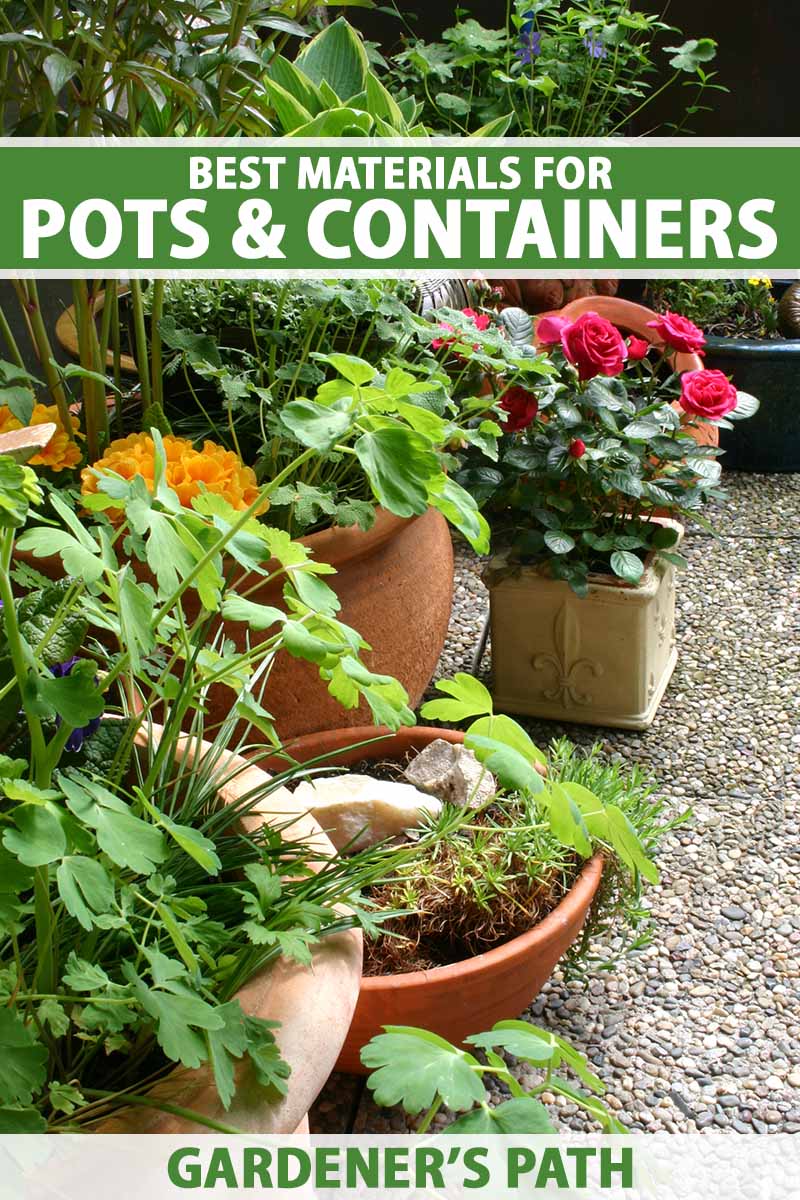
We link to vendors to help you find relevant products. If you buy from one of our links, we may earn a commission.
Plants grown in containers that are too light could tip in high winds, while too-heavy materials are tough to haul around.
Cheap containers could easily take damage, yet tougher and more expensive materials could suck your bank account dry.
To win at the game of material selection, a gardener has to weigh the good and bad before deciding yay or nay.
But how can a smart gardener go about making the right decision? With knowledge – that’s how.
Plant containers come in a wide variety of materials, with each type having notable advantages and disadvantages.
This guide breaks down the pros and cons of these common materials, which should make it easier for you to choose one to meet your needs.
Lo and behold this lineup:
Garden Pot and Planter Materials
Be prepared to consider some non-material factors before you make your selection as well, such as where you’ll keep your plants, your garden’s climate, and your budget.
All come into play when picking the perfect pot.
Just as a general heads-up, though: pots that can drain are typically better for cultivating plants than those that can’t, so either select containers with drainage holes or ones that you can drill holes into yourself.
Otherwise, plan to use planters of any material without drainage holes only as decorative cachepots.
Ceramic
Ceramic containers are sculpted from finely textured, light-colored clay, then fired in a kiln at high temperatures.
Once the ceramic has been hardened by the heat, artisans and manufacturers can apply a fine layer of glaze to its surface to give it a smooth, glossy finish, which can also extend the pot’s lifespan by many years.
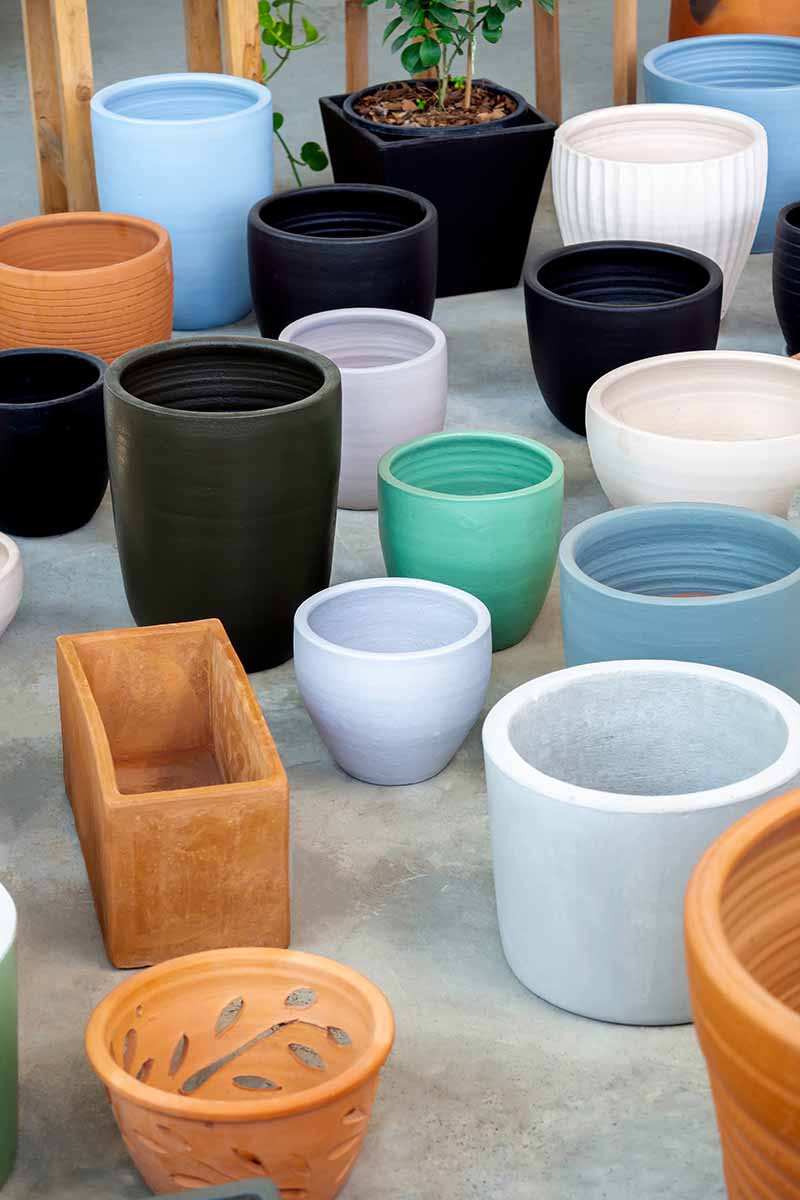
This finish reduces the pot’s porosity – unglazed containers transpire quicker than glazed ones – and general vulnerability to the elements.
However, if a ceramic pot is left out in cold weather, it can still crack in spite of its glaze. The risk is all the higher if water has collected in the pot, which expands in volume when frozen.
With this overall durability comes a heavier overall weight, which can make moving the material a bit tough. But this weight does make ceramic pots a good choice for plants that will grow to be top-heavy.
And if your ceramic does break, usually after it’s dropped, it tends to do so into large pieces rather than smashing into small, skin-piercing shards like shattered glassware.
When it comes to ceramic, you usually get what you pay for. Whether your chosen container is super cheap or quite expensive, price and quality are usually proportionate.
These also come in many different shapes and sizes.
If you’re interested, there’s a 4.25-inch ceramic pot with drainage holes that’s available in solid white or black from Wayfair. It comes with a saucer to catch drainage!
Coir
Coir containers are economically and ecologically sound choices for starting seeds, transplanting, and lining larger containers, as they’re relatively inexpensive, biodegradable, and sustainable to produce.
And despite being made from coconut husks, they’re actually sturdier than you might think.

The structure of coir is loose and airy, which allows for ample aeration and root penetration.
Yet simultaneously, it does a decent job of water retention. These pots are inexpensive and can be found in round or square shapes in multiple sizes.
Their ability to biodegrade does come with reduced longevity, though.
If you plant in them above ground, you should expect only a couple years of usage before decomposition gives them a hairy-looking appearance.
If you wish to avoid that aesthetic, in-ground ones will actually decompose into the soil – fun fact – which makes them suitable for transplanting, provided that you slice open the bottom of the container first to avoid constraining the roots.
For a set of three coir hanging basket liners offered in multiple different sizes, check out Gardener’s Supply.
Concrete
Concrete planters can look great, especially once they’ve aged a little.
While concrete is an obvious choice for large and heavy plants that might need the ballast for support against strong winds, that weight can also make the planter difficult to move.
But hey – at least they’re tough to steal!

If you plan to use concrete containers for big ol’ plantings, make sure you know where you want them, and don’t plan on moving them much.
Concrete is also a reliable insulator, and it can protect the roots even during times of significant temperature fluctuations.
But concrete can break easily from high impact falls, kind of like an elephant’s legs.
And much like pachyderms should always keep their feet on the ground, you also shouldn’t ever drop concrete or you risk serious breakage.
Concrete Honeycomb Bee Planter
For a concrete houseplant container that’s emblazoned with a pretty swanky honeycomb design, visit Gardener’s Supply.
It includes a matching disc to place beneath the pot, to catch and drips from the drainage hole.
Fiberglass
Fiberglass planters are created by laying spun glass fibers over a mold, coating those fibers with a polyester resin, and then adding some finishing touches via trimming, sanding, and primer coating.
Additionally, some manufacturers add clay to the blend to create an even better texture. These materials can be molded to look a lot like terra cotta or stone pots.
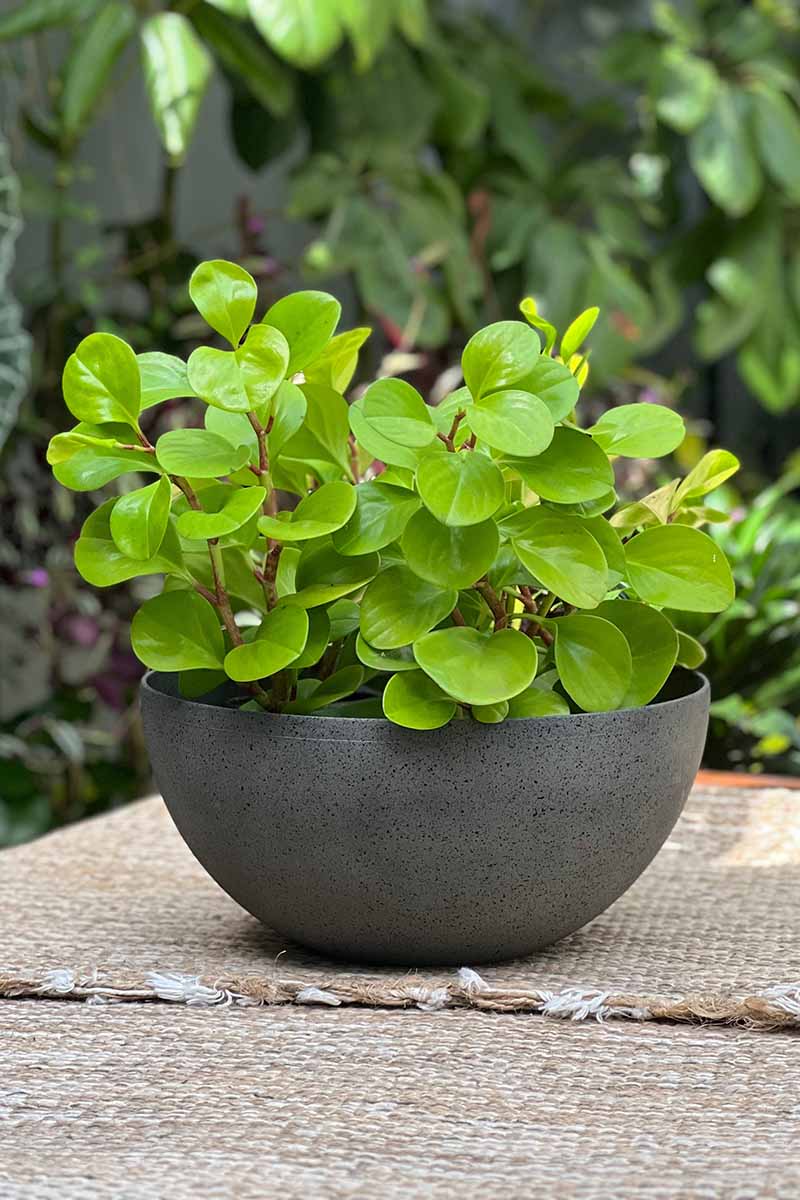
While this choice of material might not be the most ecologically friendly – as fiberglass is the opposite of readily decomposable – it does have quite a few advantages.
Fiberglass planters are lightweight, durable, UV-resistant, and look very much like the materials that they’re molded to imitate.
These containers don’t have any special storage requirements, and they can handle unexpected bouts of rough weather and temperature changes without having to be taken indoors.
However, they may develop a weathered and battered appearance over time that necessitates their eventual replacement.
For a cube-shaped, fiberglass planter that’s available in a plethora of sizes and colors, visit ePlanters.
You have the option to choose a cachepot sealed for indoor use, or you can request drainage holes.
Metal
Metal containers are extremely durable, and in the case of cast iron, they can be extremely heavy.
Said toughness makes them likely to last for many years, if they’re taken care of properly.
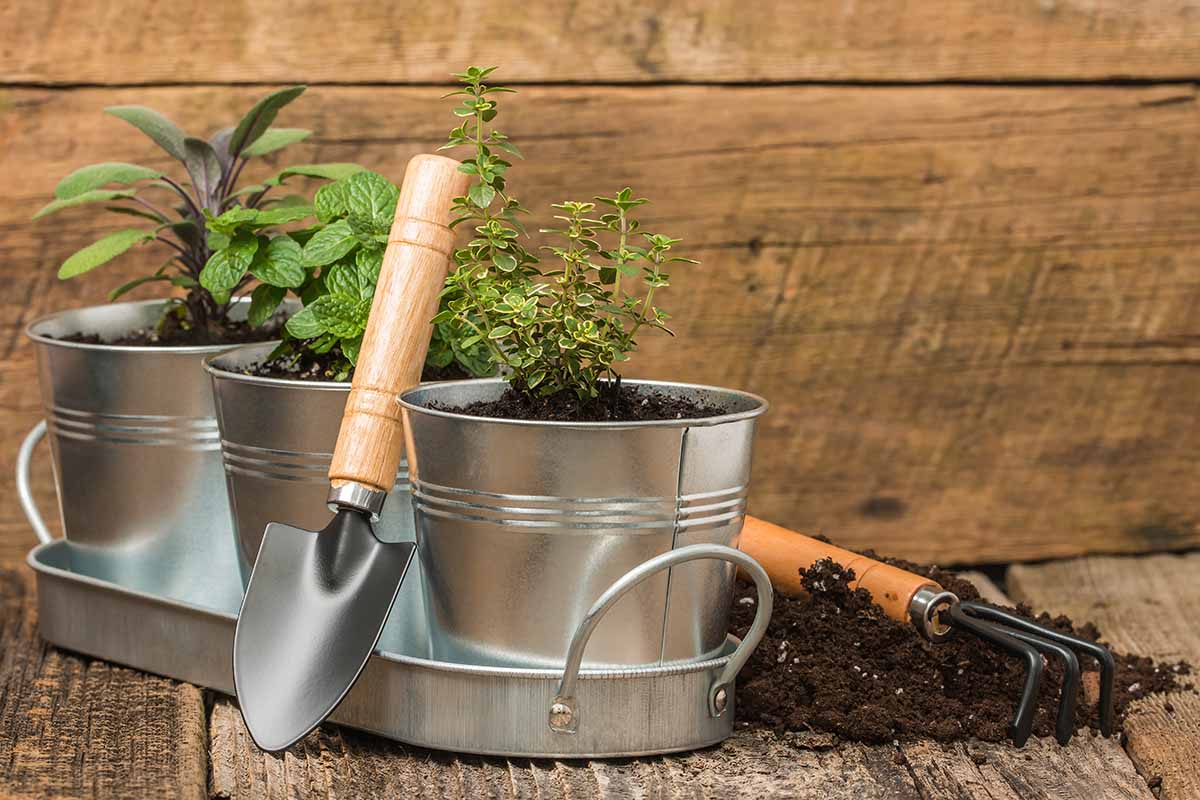
Metals such as aluminum can offer gardeners the durability of metal with a lighter weight, making the planting and moving of aluminum pots much more practical.
Aluminum doesn’t rust, requires no painting, and costs less than many other metals. Enamel finishes can also add some nice color and added protection from the elements.
Other choices in this category include copper, copper-coated stainless steel, zinc, and brass.
Although I suppose crafting pots from any metal in the periodic table would work, provided that it’s not unworkable, outside your price range, and/or radioactive.
But ironically, metal containers don’t do so hot in high heat. Or rather, the plants and soils within them don’t, as overheated metal can burn plant tissue and dry out soils.
Therefore, you should either keep metal containers solely in the shade, or fill them with plants that love the heat and dry soils.
A solid – in both the literal and figurative sense – Aluzinc steel square planter is available from Gardener’s Supply.
Plastic
Plastic planters come in an endless number of sizes and shapes. Heck, if you have a 3-D printer and mad design skills, I’m sure you could whip up some crazy shapes yourself.
Similarly to fiberglass, plastic containers can also be made to look like other materials, but are less realistic and durable than the fiberglass planters.
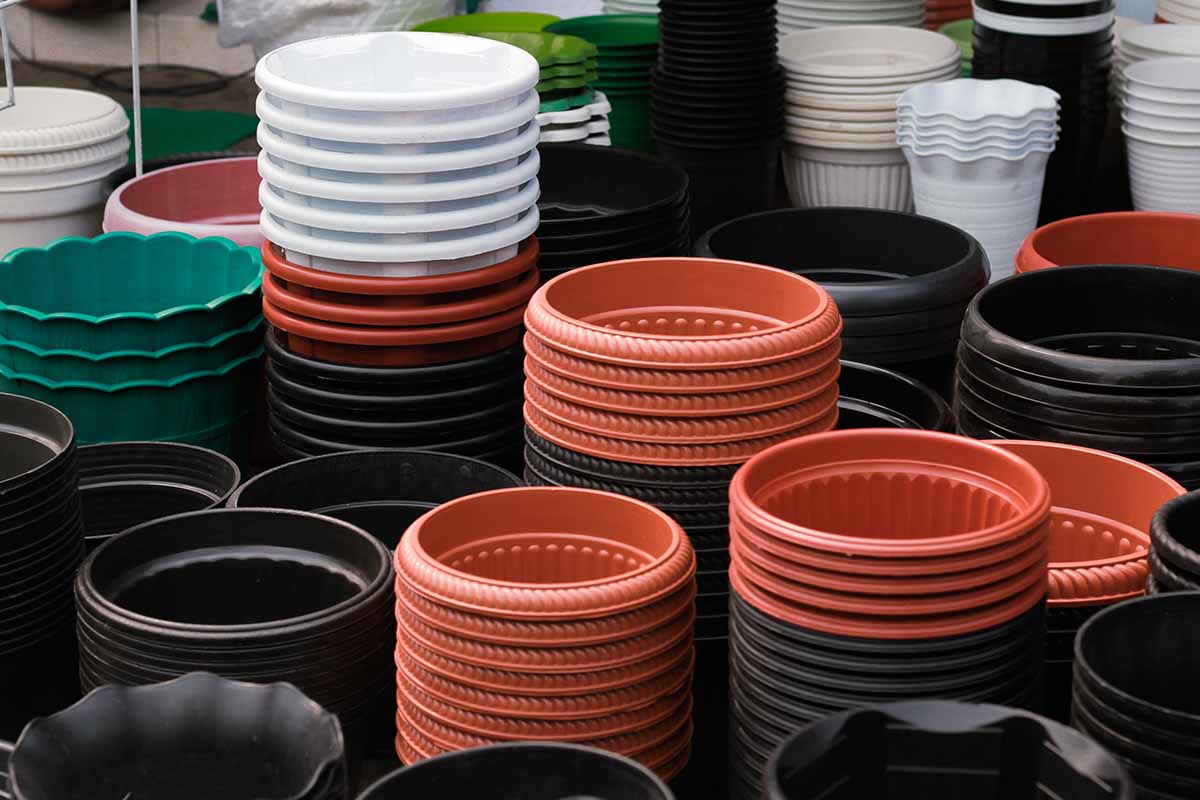
Although they don’t have the heft of the real thing, thicker versions of plastic planters can be made to imitate ceramic or terra cotta pots, while others may appear to be woven from lighter materials.
Most plants that you purchase from a store or at a garden center will go home with you in a thin plastic container, since it’s the cheapest option for commercial growers to use.
Many botanical gardens, nurseries, and veteran gardeners are united in having a pile of various plastic containers stashed somewhere that steadily grows in size with each new transplant purchase.
But cheapness aside, plastic is super resilient to dropping, and it can generally be treated with a total lack of TLC without taking too much damage.
However, the sun can make plastic fade and become brittle over time.
Plus, in the case of unstable plastics that can leach chemicals into the soil, this material may not be the best choice for growing edible plants.

For a stylish reddish-brown, white, or gray plastic planter from Fiskars that’s offered in 14- to 18-inch widths, visit Amazon. The bottom comes sealed, with optional knock-out drainage holes.
Pressed Paper
Speaking of growing edible plants, pressed paper containers are a great choice when growing and transplanting veggie seedlings.
These containers breathe well, promote healthy root growth, and insulate the roots from temperature changes that might otherwise harm or stress your plants.
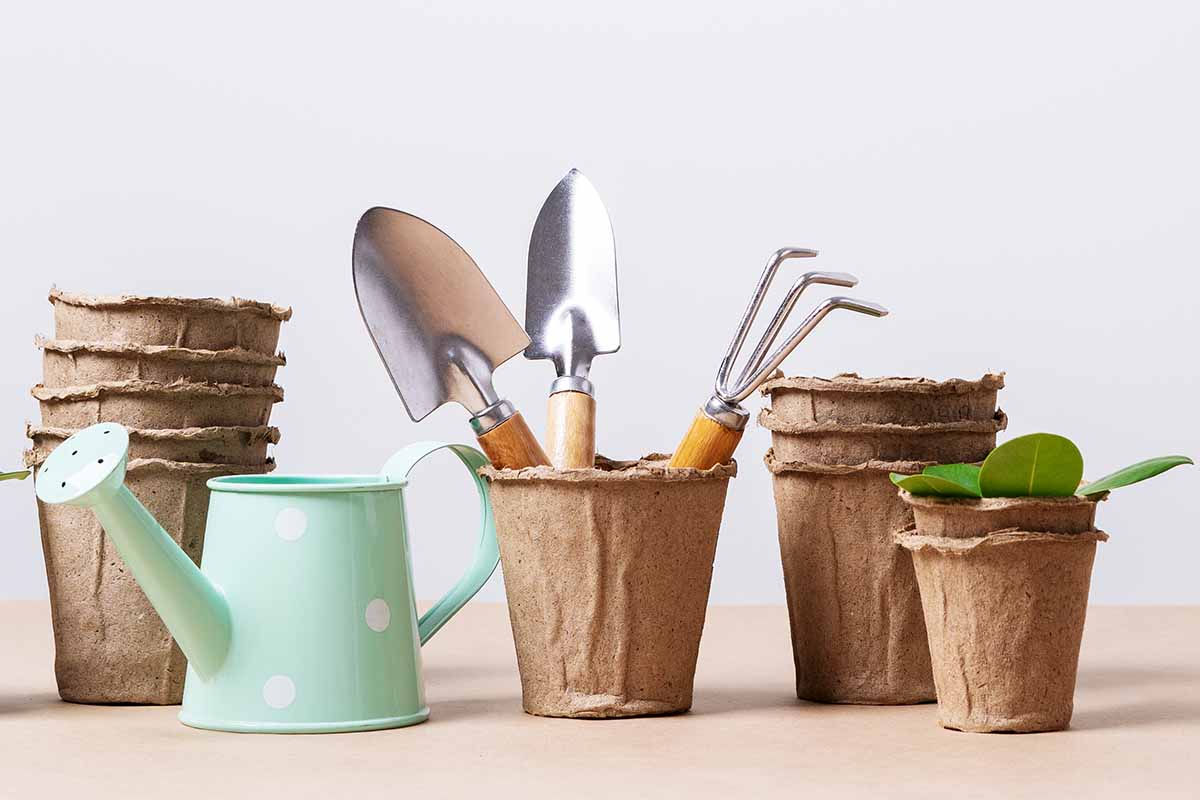
These planters are biodegradable, which is no doubt great for the environment. But as a result, you’ll have to replace them every single year.
Since the cost of these is low – usually around a couple bucks per pot – pressed paper containers are still an economically sound choice.
Some are available lined with a wax coating, which gives them a slightly longer life span.
To “go green” in style, check out these sustainably-produced, recycled paper pots from Botanical Interests.
Stone
If you love the “au naturale” aesthetic – and you probably do, if you’re growing plants – then you’ll love the look of stone.
Stone containers can be 100 percent natural or made of a synthetic substance such as polystone – the latter is a polyurethane resin mixed with powdered stone, which results in the look and feel of stone sans all that weight.
But yes, all-natural stone is super heavy, and in the case of shrub- and tree-sized containers, can require specialized equipment to lift.
Therefore, you want to choose your initial placement carefully, as moving them can be a royal pain. But on the plus side, this weight can keep the container sturdy in the face of strong winds!
Also, pure, natural stone has decent porosity, allowing for air to move in and out. This can help prevent rot and the development of water-loving pathogens.
But significant temperature fluctuations can cause some expansion and contraction, which can eventually crack and split the pot.
Handmade Polystone Pot Planter
For a black, gray, or white polystone pot available in widths of 12, 16, or 20 inches, check out Wayfair.
Terra Cotta
Terra cotta is a specific type of ceramic that is commonly used in making pots and planters of various sizes and shapes.
Terra cotta pots can be as small as two inches tall and wide, and as large as the creator’s imagination and the size of their kiln will allow.

The shapes and sizes of containers made from this material are seemingly endless, so it’s quite a versatile medium. The warm, reddish-brown color of the clay that’s used offers an earthy appeal to gardeners.
Small, unglazed terra cotta also tends to be quite affordable and readily available, which makes it a popular choice among gardeners for indoor and outdoor use.
Larger, more decorative terra cotta containers are also available, albeit at a greater expense – particularly if these are handmade.
Two aspects of terra cotta that you need to be aware of: it’s more fragile than some of the other planting options described here, and it’s generally sold unglazed.
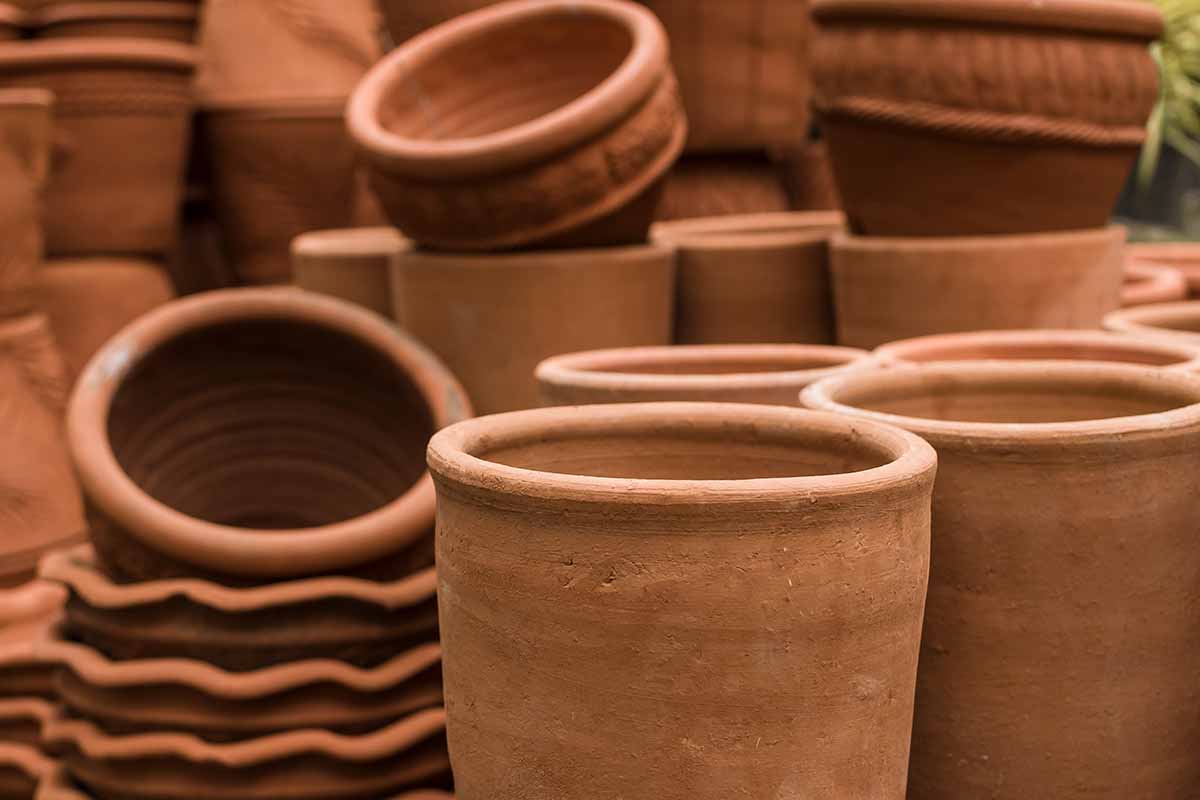
Unglazed means permeable, which means the pot can both lose moisture and take it in from the outside.
If you find that you cannot keep up with the water needs of a plant that’s otherwise thriving in a terra cotta container, then I suggest lining the interior of the pot with a plastic liner to limit the amount of water that escapes through the pot.
If you do choose to line a pot, remember to leave some drainage holes in the plastic, or you’ll encounter a new set of water-related woes.
If you live in an area with very cold winters, then it’s important to store any terra cotta pots indoors, empty and oriented upside-down, to prevent early destruction from the elements.
A glazed terra cotta pot in riviera blue is available in four different sizes from Wayfair.
Wood
Wooden planters can look great in just about any outdoor or patio setting, and they’re easily paintable.
These containers tend to be square or rectangular, although there are some curved shapes available as well.
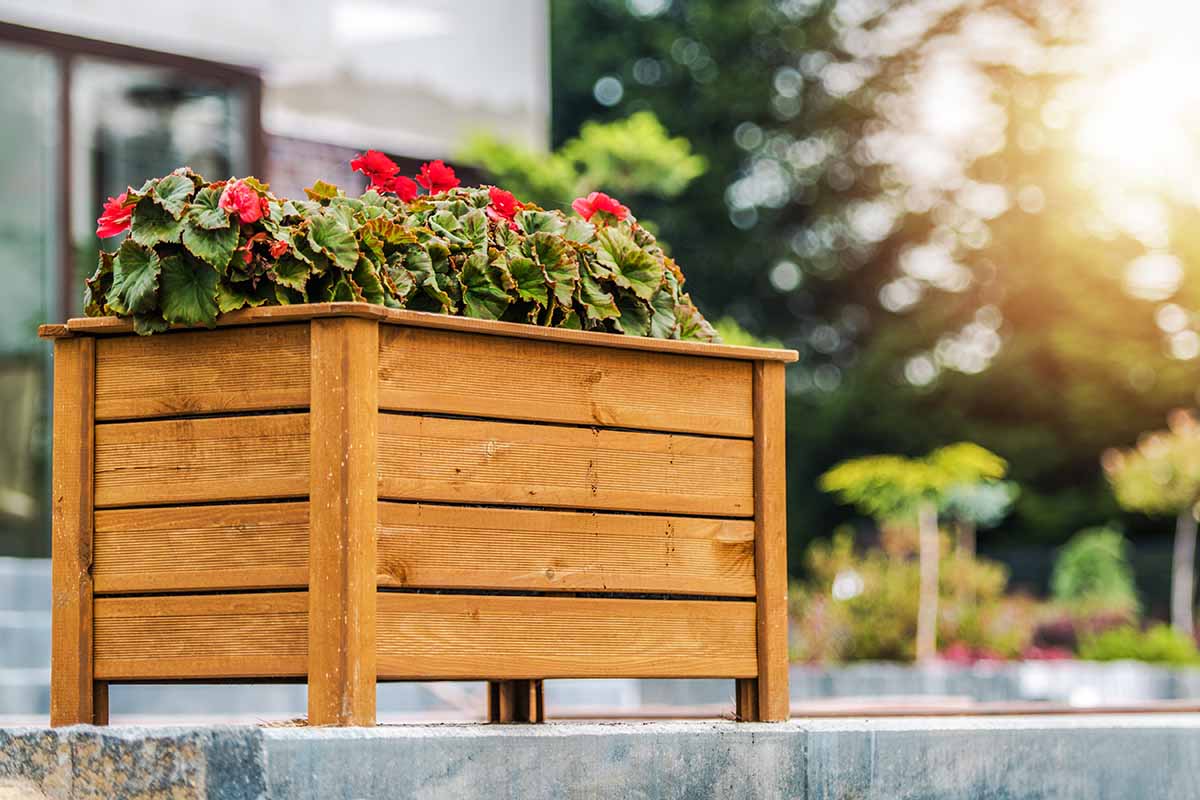
Some common types for containers are cedar, redwood, and even bamboo – the latter works wonderfully as an antimicrobial and water-resistant cachepot for houseplants.
Wood is fairly affordable, unlikely to crack in cold weather, and slow to dry out. The only real dangers with wood are rot and decay.
Therefore, I suggest lining a wooden planter with plastic to prevent or slow this problem… but don’t forget to leave some holes in the plastic for drainage!
The workability of wood as a planter medium also makes the material quite attractive to handy people and DIY-ers.
Not everyone can bust out a kiln for high-end ceramic-making, but most folks are capable of putting together a raised bed in their yard, albeit with a bit of prep beforehand.
A weather-resistant window planter box that’s made of acacia wood is available in 24-, 30-, and 36-inch lengths from Gardener’s Supply Company.
Living in a Material World
Knowing what stuff is made of really comes in handy in this world of ours.
And just like knowing which foods contain peanuts can save those allergic from a bout of anaphylaxis, knowing about planter materials can save gardeners time, money, and effort.
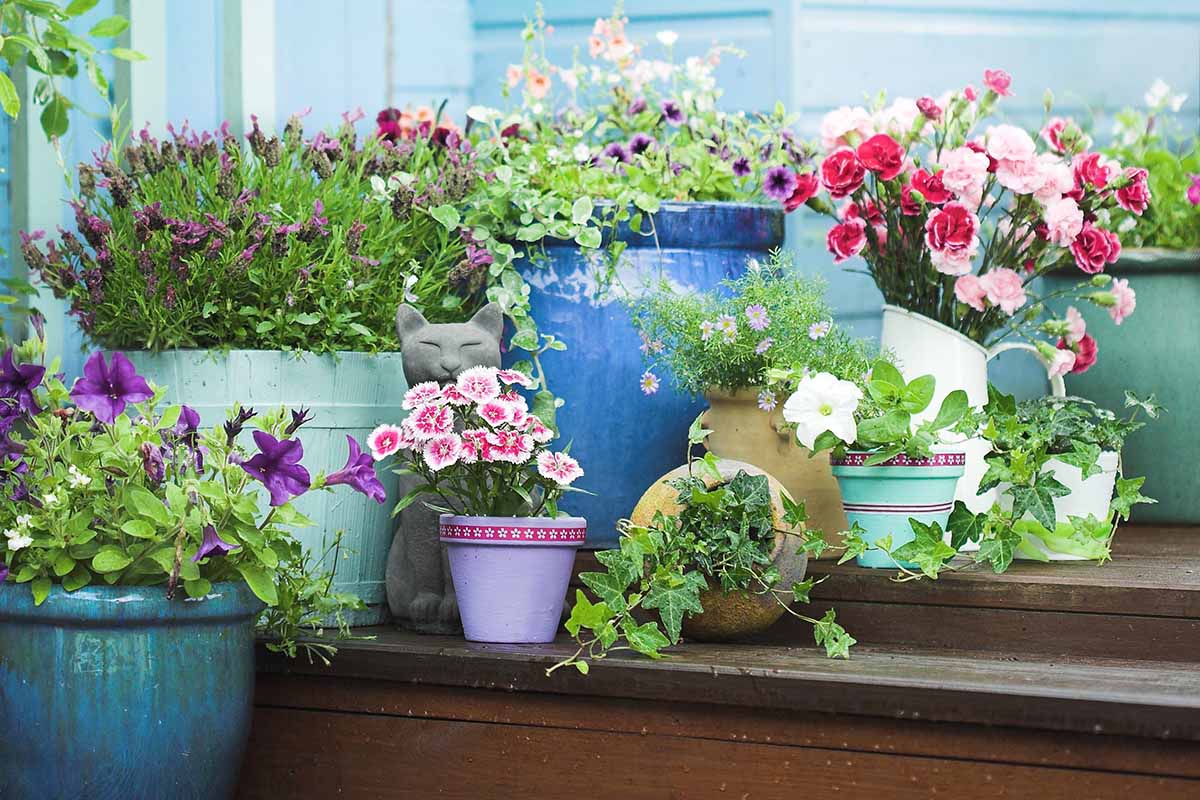
Hopefully this primer has provided enough information for you to work with. Combine that info with your own preferences, and you should be ready now to select a material. Have fun!
Comments, questions, materials that I unjustly left out? Share it all in the comments section below!
Still interested in containers, planters, and the like? Then these guides should keep you pleasantly occupied:
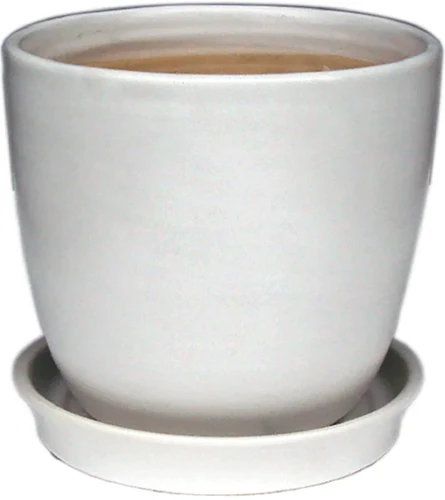

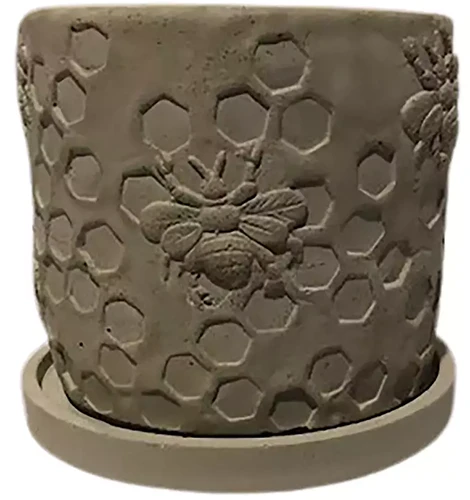
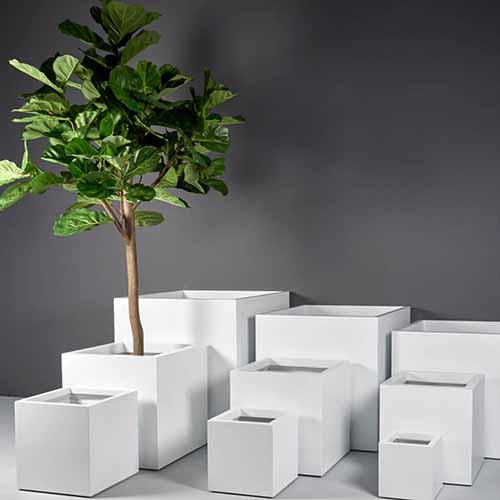
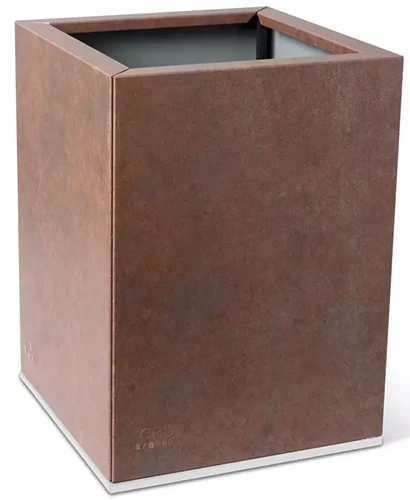
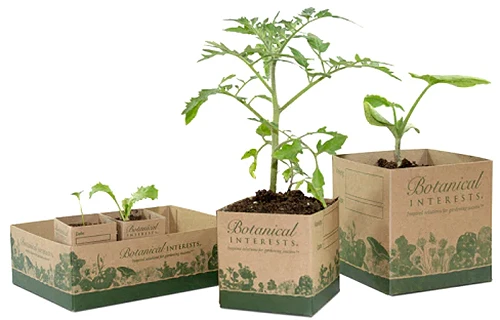
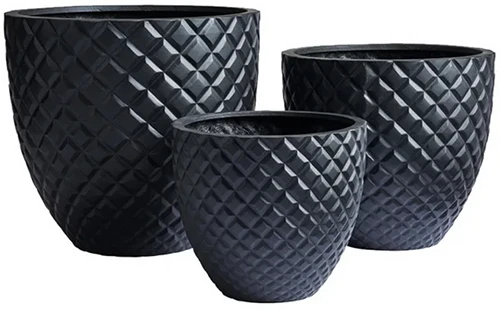
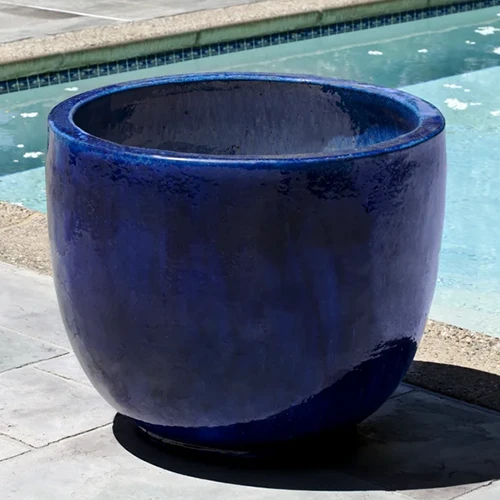
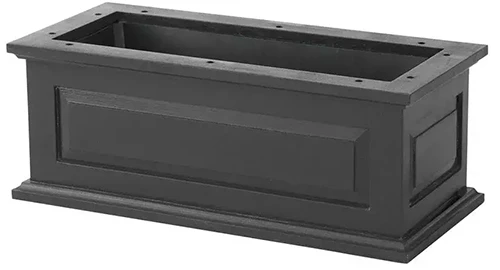
I would like to know more about raised gardening.
Hi Denise,
We plan to post more on raised bed gardening later this summer. Stay tuned!
Thanks for reading.
Awesome blog post. I have read many blogs related to this, but I truly got superb information from here. Thanks for sharing it.
I want to make sure that I get the right planters. I didn’t know that coir planters looked so nice! The fact that they are friendly to the environment is a huge plus as well.
Thanks for your comment, Braden. They’re a new material for a lot of people, with so many great attributes. What are you planting this season? Please follow our page on Facebook- we love when our readers share photos of what’s growing in their plots!
Yes, coir planters/coir baskets look great, but beware when springtime rolls around and the birds are out looking for nesting material. I have watched my hanging coir baskets be “whittled away” to nothing by nesting birds. I think a great place to get pots (ceramic, terra cotta) is on Craigslist or eBay. eBay is great for smaller, prettier pots for your succulents. Recently, I had great success growing a yellow bell pepper a in largish ceramic pot. The pot is about 18″ high and 12-14″ in diameter. Again – watch out for pilfering animals. My pepper plant (bought an organic… Read more »
I use quite a few resin pots but they do allow the soil to get hot in the tropical sun whereas clay type pots do not. I think terracotta are best in this climate but GFR is good for shadier spots. I always put a few rocks and gravel at the bottom of big pots to give a natural drainage area.
I am on the Landscape Committee for my community. We are removing two columns on both signs of our entrance sign and considering putting an urn or planter to replace the columns. The height of the sign, including the base it sits on, is 52 inches. Can you suggest what size (height & diameter) urn/planter we should use and what material you think would be best?
My 99c store has bamboo pots. Would these make a good pot choice?
I’ve used ceramic containers with bamboo saucers, which are a great choice since this durable wood has a fine grain and doesn’t absorb water. Bamboo planters, on the other hand, are often manufactured without drainage holes. If this is the case for the ones that you found, using a plastic insert or another smaller container with good drainage and placing it inside is recommended.
I would like to know the best material for outdoor pots in the desert where temperatures can reach 120 degrees
Thanks for your question, Bonnie. What types of plants are you growing? It can be difficult to provide good drainage while at the same time aiming to provide your potted plants with enough moisture to sustain them through hot, sunny days in the desert. I have two tops tips for planters and pots in desert environments: 1. Avoid plastic, since extreme temperatures can cause this material to crack and become brittle quickly. 2. Avoid dark colors, since these will retain heat and dry out your plants very quickly. Terra cotta ceramic planters are one of my favorites for use in… Read more »
Hello Everyone
Graham here new to the discussion,liked it pretty much. I was searching the internet for answers of an alternative to Concrete, because I make and sell concrete planters. However just recently, I was looking at other techniques on making planters. Saw this method called fiberclay hope that someone can tell me what is the raw material used.
Please help me find out.
Welcome, Graham! I don’t have firsthand experience with the manufacturing process, but fiber clay is made with a combination of fiberglass fibers and clay, sometimes with the addition of another material such as gravel. Fiber clay is also used in other types of ceramics and sculptural artwork, and is usually comprised of a combination of clay and paper or fabric fibers, but this probably won’t provide the kind of structural integrity you’re looking for to construct sturdy pots and planters. Hypertufa is another very popular lighter weight alternative to concrete that is made with a combination of Portland cement, perlite… Read more »
I live in an apartment with a small balcony. I am contemplating using copper to make a planter to grow vegetables. Always heard that plastic contains harmful material. Not sure about copper. Is copper harmful to humans?
Copper in the soil itself can inhibit nutrient update by plants, but the copper in containers is “fixed” and as such, should be safe to use since only small amounts will naturally leech into the soil. If you have any concerns, use a liner inside your planters, and always be sure to use well-draining containers. Issues with growing in plastic containers are debatable and the various risks involved can vary, since there are many different types of plastics on the market. BPA in plastics can be harmful to plants at high concentrations, and it is sometimes found in plastic-based “fabric”… Read more »
I bought my first hydrangea. I live in Cali, where the weather goes back and forth from 90 to the upper 100s. I would like to plant in a planter so I can take it with me when we move out of our rental.
Hey Erica, these plants are moisture lovers, so be sure to amend your soil with water-retentive materials such as peat moss, perlite, or vermiculite.
And once planted, add a thick straw mulch to help retain moisture and keep roots cool.
For transportation purposes, containers made of plastic or resin are lightweight and the easiest to move from one location to another.
Thanks for asking!